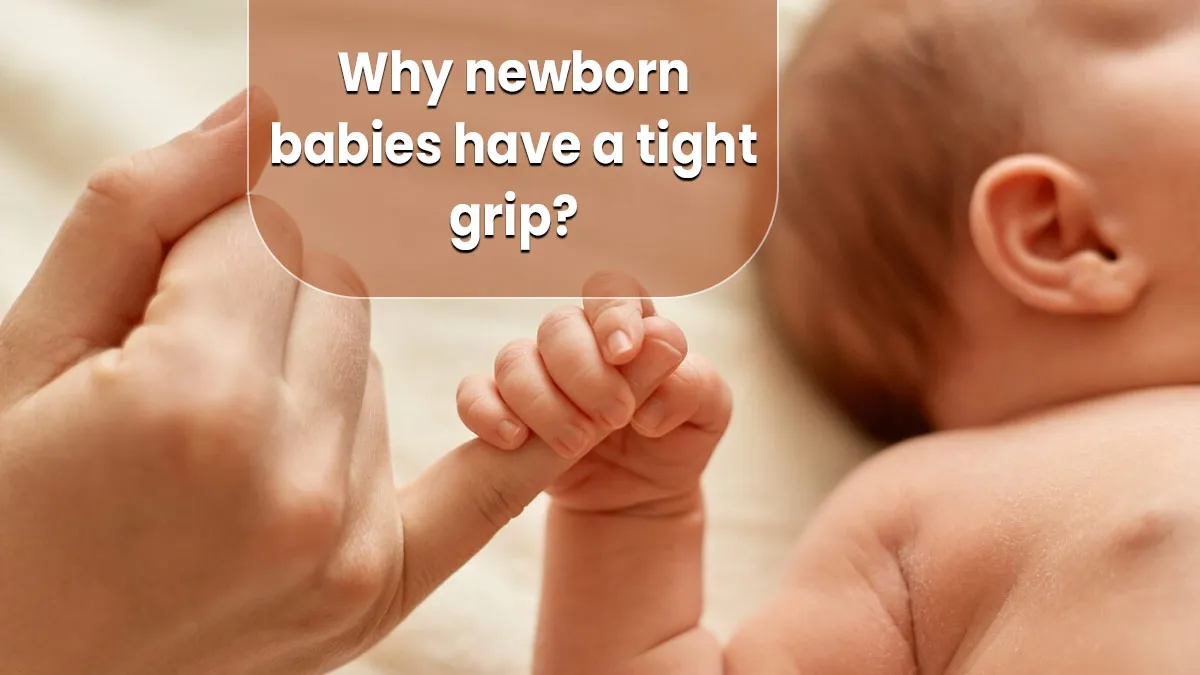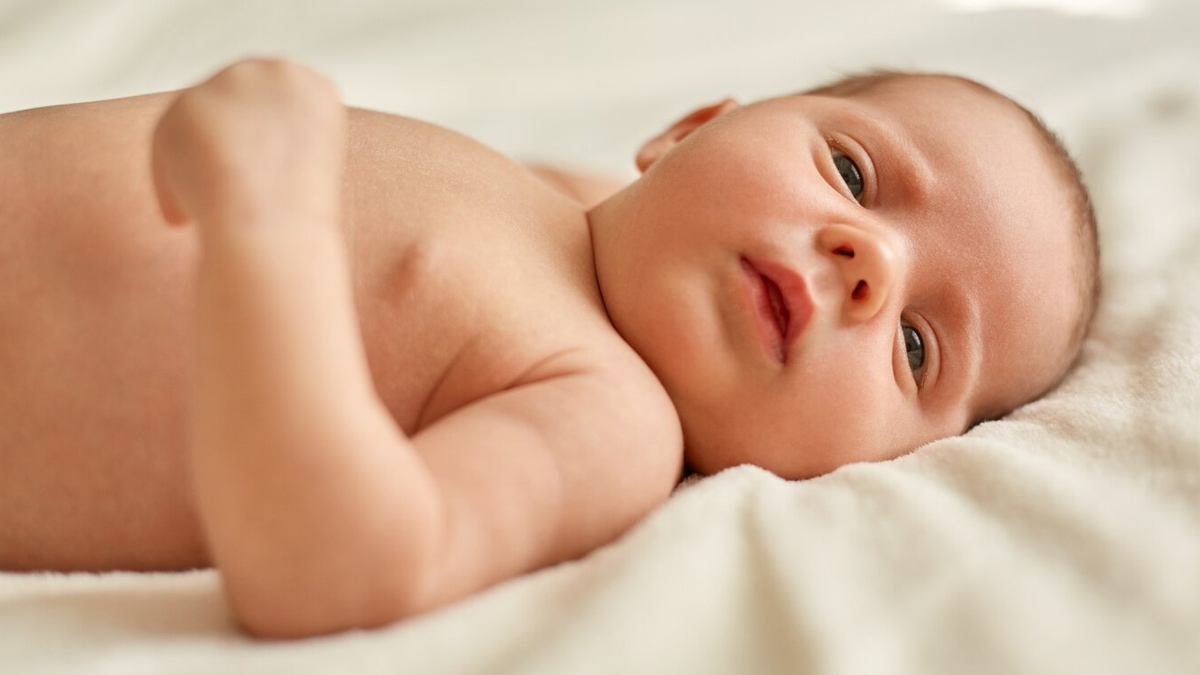
There’s something magical about the moment a newborn baby wraps their tiny fingers around yours. That surprisingly strong grip isn’t just adorable, it’s a primal reflex hardwired into their biology. Known as the Palmar Grasp Reflex, this instinctive clutching is one of nature’s clever survival tools. But why do babies grip so tightly? How long does this reflex last, and what happens if it doesn’t fade? From its evolutionary roots to its role in early development, let’s unravel the science behind this fascinating baby behaviour and what it reveals about human growth.
Table of Content:-
What is the Palmar Grasp Reflex?
View this post on Instagram
The Palmar Grasp Reflex is an automatic response seen in newborns. When an object (like a finger) touches a baby’s palm, they instinctively close their fingers around it. This grip is so powerful that, in some cases, a baby can briefly support their own weight!
Dr Devendra Dangar, Pediatrician, Newlife Children’s Hospital, Kutch, explains: “This reflex is nature’s way of ensuring survival. For our early ancestors, a strong grip might have helped infants cling to their mothers. Today, it’s a key sign of healthy nervous system development.”
Key Features of the Palmar Grasp Reflex
- Automatic & Instant: Babies don’t “choose” to grip—it’s an involuntary reaction.
- Strong Hold: The reflex is powerful enough to lift the baby slightly if pulled upward (though this is not recommended!).
- Timeline: Appears at birth and typically fades by 5–6 months as voluntary control develops.
- Symmetrical: Both hands show the reflex equally in healthy infants.
ALSO READ: Is Honey Safe for Babies? Expert Explains the Dangers of Infant Botulism
Why Do Babies Have This Reflex?
-1742816679385.jpg)
1. Survival Instinct
Evolutionary biologists believe this reflex dates back to when human ancestors lived in trees. A strong grip helped infants hold onto their mothers during movement, reducing the risk of falling.
2. Early Motor Skill Development
The Palmar Grasp Reflex lays the groundwork for future skills like grabbing toys, feeding themselves, and eventually writing. “It’s the first step toward hand-eye coordination,” says Dr Dangar.
3. Nervous System Check
Doctors use this reflex to assess brain and nerve health. A weak or absent grip could signal neurological issues, while a prolonged reflex (beyond 6 months) might indicate developmental delays.
A Study on Infant Reflexes and Development
Astudy published in Pediatric Research tracked 500 infants to understand the link between early reflexes and motor skills. Researchers found that babies with a strong Palmar Grasp Reflex in the first month showed better fine motor control (like holding spoons) at 9–12 months. The study highlights how primal reflexes act as building blocks for complex movements.
When Should Parents Worry?
While the Palmar Grasp Reflex is normal, consult a paediatrician if:
- The reflex is absent at birth.
- The grip feels unusually weak or uneven between hands.
- The reflex persists beyond 6 months.
- Dr Dangar advises: “Most babies outgrow this reflex naturally. But if it stays too long, it could delay skills like crawling or grasping objects intentionally.”
Fun Ways to Engage Your Baby’s Grip
-1742816662731.jpg)
- Finger Play: Let your baby grip your pinky finger—it’s a bonding moment and strengthens their hand muscles.
- Soft Toys: Offer lightweight, textured toys to stimulate their senses.
- Tummy Time: Place toys slightly out of reach during tummy time to encourage reaching and grasping.
What Happens When the Reflex Fades?

Around 5–6 months, babies start replacing involuntary grips with deliberate actions. You’ll notice the kids doing the following activities:
- Dropping objects on purpose.
- Swiping at toys.
- Transferring items from one hand to the other.
- “This transition marks progress in brain development,” says Dr Dangar. “It means their nervous system is maturing, and they’re learning to control movements.”
ALSO READ: Is Kajal Safe for Babies? Here Is How It May Cause More Harm Than Protecting Them From Evil Eye
Conclusion
The Palmar Grasp Reflex is a fleeting yet vital part of infancy. It reminds us how human development is a mix of ancient survival instincts and modern milestones. As Dr Dangar sums up: “That tiny grip is more than just cute—it’s a window into your baby’s health and growth.” So next time your little one clutches your finger, marvel at the wonder of biology in action!
Also watch this video
Read Next
What are Monochorionic-Diamniotic Twins (MCDA)? Is Normal Delivery Possible in Such a Case?
How we keep this article up to date:
We work with experts and keep a close eye on the latest in health and wellness. Whenever there is a new research or helpful information, we update our articles with accurate and useful advice.
Current Version